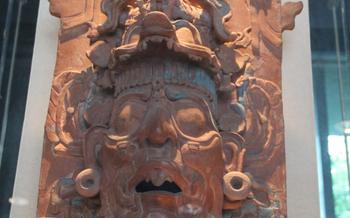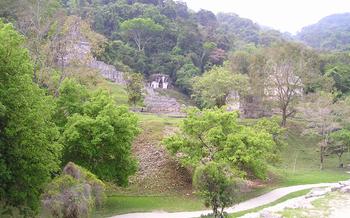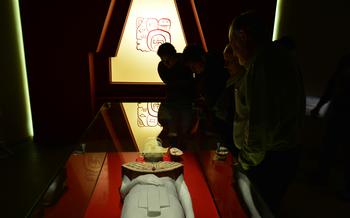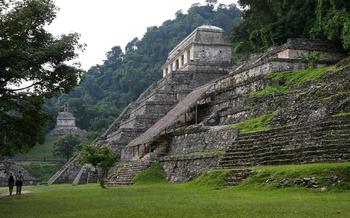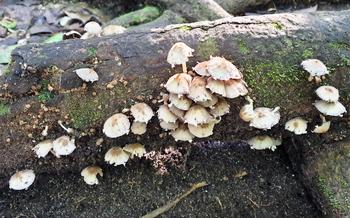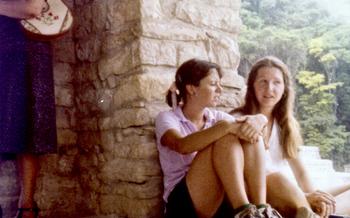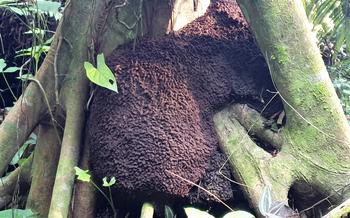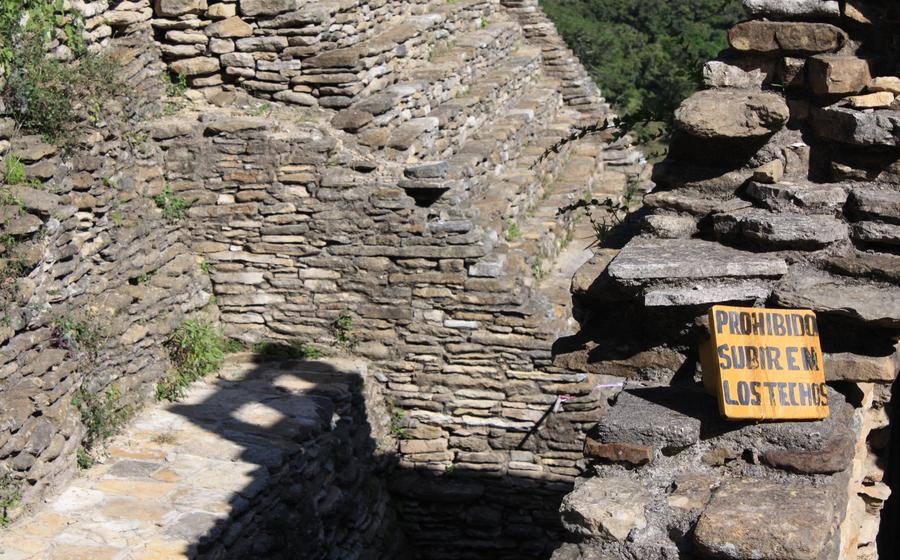
Yaxchilán Archaeological Site
- Palenque: Gateway to Maya History
- Unveiling Yaxchilán: A Journey Through Time
- Symbolism and Iconography: Unraveling the Stories
- Rulers and Dynasties: The Legacy of Yaxchilán
- Hieroglyphic Inscriptions: Deciphering the Past
- Daily Life and Economy: A Glimpse into the Past
- Nature and Environment: A Harmonious Coexistence
- Exploring the Surrounding Area: Uncovering Hidden Gems
- Planning Your Visit: Essential Tips for Travelers
- Safety and Security: Ensuring a Smooth Journey
- Resources and Further Reading: Deepening Your Knowledge
- Etiquette and Cultural Sensitivity: Respecting Local Customs
- Insider Tip: Exploring Beyond the Main Site
Palenque: Gateway to Maya History
Palenque, a city nestled in the heart of Chiapas, Mexico, stands as a testament to the grandeur of the ancient Maya civilization. Once a thriving metropolis, Palenque played a pivotal role in the Maya world, leaving behind a legacy of architectural marvels, intricate carvings, and a rich cultural heritage. Immerse yourself in the captivating history of the Maya people as you explore the ruins of Palenque, a living testament to their ingenuity and artistry.
Conveniently located in Chiapas, Mexico, Palenque offers easy access to travelers eager to delve into the mysteries of the Maya civilization. Whether you choose to embark on a road trip, hop on a scenic bus ride, or soar through the air on a domestic flight, the journey to Palenque is as captivating as the destination itself. Prepare to be awe-inspired as you step into this ancient city, where the echoes of Maya history resonate through the lush jungle surroundings.
Unveiling Yaxchilán: A Journey Through Time
Nestled deep within the lush rainforest of Chiapas, Mexico, lies the ancient Maya city of Yaxchilán. Once a thriving metropolis, Yaxchilán stands as a testament to the architectural prowess and cultural achievements of the Maya civilization. Its well-preserved structures, intricate carvings, and rich history captivate visitors, offering a glimpse into the grandeur of a bygone era.
Yaxchilán's strategic location on the banks of the Usumacinta River, a vital trade route, contributed to its prominence and wealth. The city flourished during the Late Classic period (600-900 AD), becoming a powerful regional center and a significant player in the political and economic dynamics of the Maya world.
Reaching Yaxchilán requires a bit of adventure and planning. The journey begins in the town of Frontera Corozal, where visitors can board a boat that takes them on a scenic ride along the Usumacinta River. As the boat glides through the tranquil waters, the lush rainforest unfolds, revealing glimpses of wildlife and ancient Maya ruins hidden among the dense vegetation.
Upon arrival at the Yaxchilán Archaeological Site, visitors are greeted by a breathtaking sight. The towering pyramids, ornate temples, and intricate carvings that adorn the site transport them back in time to the era of the Maya kings and queens. The site's remoteness and the surrounding rainforest create an aura of mystique and wonder, making the journey to Yaxchilán a truly unforgettable experience.
Symbolism and Iconography: Unraveling the Stories
Maya iconography played a crucial role in communicating narratives, beliefs, and historical events. At Yaxchilán, this visual language is intricately woven into the site's architecture and sculptures. The intricate carvings and symbols found throughout the site provide a glimpse into the minds and hearts of the ancient Maya.
One significant aspect of Yaxchilán's iconography is its emphasis on dynastic history. The site's many sculptures and reliefs depict rulers and their families, often engaged in rituals or warfare. These representations served to legitimize the rulers' power and authority, while also providing a visual record of their accomplishments.
Another important theme in Yaxchilán's iconography is the relationship between humans and the supernatural. Many of the site's carvings depict deities, spirits, and mythical creatures. These representations reflect the Maya belief in a complex and interconnected cosmos, where the natural and supernatural realms were closely intertwined.
By carefully studying and interpreting the iconography at Yaxchilán, archaeologists and historians have been able to gain valuable insights into the lives, beliefs, and cultural practices of the ancient Maya. These symbols and carvings provide a window into a lost world, allowing us to connect with the past and appreciate the richness and complexity of Maya civilization.
Rulers and Dynasties: The Legacy of Yaxchilán
The Maya political system was characterized by a complex network of city-states, each ruled by a powerful dynasty. Yaxchilán was no exception, with a rich history of rulers who left their mark on the city's development and legacy.
Among the most notable rulers of Yaxchilán was Shield Jaguar II, who ascended to the throne in 681 AD. During his reign, Yaxchilán reached the height of its power and influence. Shield Jaguar II was a skilled warrior and strategist who expanded the city's territory and strengthened its alliances. He also commissioned the construction of several impressive structures, including Temple 23, which features intricate carvings depicting his military victories.
Another significant ruler of Yaxchilán was Bird Jaguar IV, who ruled from 752 to 768 AD. During his reign, Yaxchilán faced challenges from rival city-states, including Piedras Negras. Bird Jaguar IV successfully defended his city and maintained its independence. He also oversaw the construction of several temples and palaces, including the Small Acropolis, which served as the royal residence.
The rulers of Yaxchilán played a crucial role in shaping the city's history and legacy. Their political alliances, military campaigns, and building projects contributed to Yaxchilán's rise to power and prominence. The city's rich history and impressive architecture stand as a testament to the skill and leadership of its rulers.
Hieroglyphic Inscriptions: Deciphering the Past
The ancient Maya left behind a wealth of knowledge and history inscribed in intricate hieroglyphs, a writing system that allowed them to communicate complex ideas and record their rich cultural heritage. At Yaxchilán, these hieroglyphic inscriptions are particularly abundant, adorning stelae, lintels, and other structures throughout the site.
Translating and interpreting these hieroglyphic texts has been a challenging but rewarding task for scholars and archaeologists. Through careful study and comparison with other Maya inscriptions, experts have been able to decipher much of the content, shedding light on the history, rulers, and events that shaped Yaxchilán's past.
The deciphered texts reveal the names and titles of Yaxchilán's rulers, their lineage, and their accomplishments. They provide insights into political alliances, military conflicts, and trade relations with neighboring Maya cities. The inscriptions also recount important events, such as royal marriages, births, and deaths, offering a glimpse into the personal lives of the Maya rulers.
Beyond historical information, the hieroglyphs at Yaxchilán also provide valuable insights into Maya religious beliefs and mythology. They recount the stories of gods and goddesses, their interactions with humans, and the creation of the world according to Maya cosmology. These inscriptions offer a window into the spiritual and intellectual world of the ancient Maya, allowing us to better understand their complex and sophisticated civilization.
Daily Life and Economy: A Glimpse into the Past
Yaxchilán was a thriving city with a complex social structure and a vibrant economy. The Maya people who lived here were skilled farmers, artisans, and traders. They cultivated a variety of crops, including maize, beans, and squash, and raised animals such as turkeys and dogs. They also produced a variety of goods, including pottery, textiles, and jewelry, which they traded with other Maya cities and even with distant regions.
The Maya of Yaxchilán were also skilled builders and engineers. They constructed a sophisticated system of canals and reservoirs to control the flow of water, which was essential for agriculture. They also built a series of causeways and bridges to connect the city with the surrounding countryside.
Yaxchilán's economy was based on a combination of agriculture, trade, and tribute. The city's rulers collected taxes from the surrounding population and used these resources to support the city's elite and to fund public works projects. The Maya of Yaxchilán also engaged in long-distance trade with other Maya cities and with peoples from as far away as the Gulf Coast and the Valley of Mexico.
The city's wealth and prosperity are evident in the elaborate architecture and artwork that can be seen at Yaxchilán today. The city's rulers built massive temples and palaces, which were decorated with intricate carvings and sculptures. The Maya of Yaxchilán were also skilled artists, and they produced a variety of beautiful pottery, textiles, and jewelry.
Nature and Environment: A Harmonious Coexistence
The Maya people held a profound connection with the natural environment, viewing it as a sacred and integral part of their lives. At Yaxchilán, this relationship is evident in the site's harmonious integration with its surroundings. The Maya carefully planned the city's layout to align with natural features, such as rivers and hills, creating a sense of unity between the built environment and the landscape.
The lush vegetation surrounding Yaxchilán provided a rich source of resources for the Maya. They utilized plants for food, medicine, and construction materials, and they also revered certain trees and plants for their spiritual significance. The Maya also practiced sustainable farming techniques, such as terracing and raised fields, to minimize their impact on the environment.
In recent years, there has been a growing awareness of the importance of preserving the natural heritage of Yaxchilán. Conservation efforts have been implemented to protect the site's delicate ecosystem and ensure its long-term sustainability. These efforts include reforestation projects, the establishment of buffer zones, and the promotion of responsible tourism practices.
By embracing sustainable practices and fostering a deep appreciation for the natural environment, visitors to Yaxchilán can contribute to the preservation of this ancient city and its surrounding ecosystem, ensuring that future generations can continue to marvel at its beauty and cultural significance.
Exploring the Surrounding Area: Uncovering Hidden Gems
Beyond the captivating allure of Yaxchilán, the surrounding region of Palenque offers a treasure trove of hidden gems waiting to be discovered. Immerse yourself in the rich tapestry of Maya history and culture by venturing to nearby archaeological sites, each boasting its unique charm and significance. Embark on a journey to Bonampak, renowned for its exquisitely preserved murals that offer a vibrant glimpse into Maya life and mythology. Marvel at the cascading waterfalls of Agua Azul, where crystal-clear waters tumble over limestone cliffs, creating a mesmerizing spectacle of nature's artistry.
Indulge in the vibrant local culture by exploring the bustling markets of Palenque, where you can haggle for traditional handicrafts, savor the flavors of authentic Maya cuisine, and engage with the warm and welcoming locals. Immerse yourself in the rhythm of traditional dances and music, allowing yourself to be captivated by the vibrant expressions of Maya heritage. As you delve deeper into this enchanting region, you'll discover a harmonious blend of natural wonders and cultural treasures, making your journey to Palenque an unforgettable experience.
Planning Your Visit: Essential Tips for Travelers
To make the most of your journey to Yaxchilán and Palenque, careful planning is essential. Timing is crucial. The dry season from November to April offers ideal weather conditions for exploring the region. Pack accordingly for warm, humid weather, including comfortable clothing, sturdy footwear, a hat, and sunscreen. Consider bringing insect repellent and a raincoat during the rainy season.
When exploring the archaeological sites, comfortable shoes are a must. The terrain can be uneven, and some areas require climbing. Stay hydrated by carrying a reusable water bottle. To enhance your experience, consider hiring a local guide. They can provide valuable insights into the history, culture, and significance of the sites.
Remember to arrive early to avoid crowds and enjoy the sites at your own pace. Photography enthusiasts should bring appropriate equipment and be mindful of respecting the site's regulations regarding photography. Be prepared to spend several hours exploring Yaxchilán, as there is much to see and appreciate.
Safety and Security: Ensuring a Smooth Journey
When embarking on any journey, safety should be a top priority. While Mexico is generally a safe destination, it's essential to take necessary precautions to ensure a smooth and enjoyable experience.
In Palenque, the crime rate is relatively low, but it's always advisable to be vigilant and aware of your surroundings. Avoid walking alone at night, especially in secluded areas. Keep valuables secure and out of sight, and be cautious when exchanging money.
Specific to Yaxchilán, the site is located in a remote area, and it's recommended to visit as part of an organized tour. Local guides are knowledgeable about the site and can provide valuable insights while ensuring your safety.
It's important to respect the local customs and traditions when visiting Maya sites. Avoid touching or climbing on ancient structures, as they are culturally significant and should be preserved. Always ask permission before taking photographs of local people, and be mindful of their privacy.
By following these guidelines and taking necessary precautions, you can fully immerse yourself in the wonders of Yaxchilán and Palenque while ensuring a safe and memorable journey.
Resources and Further Reading: Deepening Your Knowledge
To further delve into the rich history and culture of Yaxchilán, consider exploring the following resources:
- Books:
- "Yaxchilán: The Design of a Maya Ceremonial City" by Linda Schele and David Freidel
-
"The Maya Forest: A History of Resilience and Transformation" by Thomas W. Patterson
-
Articles:
- "The Political History of Yaxchilán, Chiapas, Mexico" by Simon Martin and Nikolai Grube
-
"Yaxchilán: A Maya City in the Rainforest" by Arthur A. Demarest
-
Documentaries:
- "Yaxchilán: City of the Sacred Tree" (available on YouTube)
Online Resources: - The official website of the Instituto Nacional de Antropología e Historia (INAH): https://www.inah.gob.mx/ - The Maya Exploration Center website: https://www.mayaexploration.org/ - The Mesoamerican Photo Archives website for a vast collection of images: http://www.mesoamericanphotoarchives.com/
Local Experts and Tour Operators: For a more immersive experience, consider booking a guided tour with local experts or tour operators. They can provide valuable insights into the history, culture, and significance of Yaxchilán.
By exploring these resources and connecting with local experts, you can gain a deeper understanding of the Maya civilization and its enduring legacy at Yaxchilán.
Etiquette and Cultural Sensitivity: Respecting Local Customs
When visiting Yaxchilán and other Maya sites, it is crucial to be mindful of local customs and traditions to ensure a respectful and enriching experience. Here are some guidelines to follow:
-
Dress appropriately: Opt for modest clothing that covers your shoulders and knees, as revealing attire may be considered disrespectful.
-
Be respectful of sacred spaces: Refrain from touching or climbing on ancient structures, as they hold deep religious and cultural significance.
-
Ask permission before taking photographs: Always seek consent from local people before taking their pictures, especially when they are engaged in traditional activities or ceremonies.
-
Support local communities: Purchase souvenirs and handicrafts from local artisans to support their livelihoods and preserve cultural traditions.
-
Learn a few basic Spanish phrases: Making an effort to communicate in the local language shows respect and can enhance your interactions with the people you meet.
-
Be mindful of noise levels: Keep your voice down and avoid loud conversations, especially in areas where ceremonies or rituals are taking place.
-
Respect the environment: Dispose of trash properly and refrain from littering. Respect the natural surroundings by staying on designated trails and avoiding disturbing wildlife.
By following these guidelines, you can contribute to the preservation of Maya culture and ensure a positive and meaningful experience for yourself and the local communities you encounter.
Insider Tip: Exploring Beyond the Main Site
While the main archaeological zone of Yaxchilán is undoubtedly captivating, venturing beyond its boundaries reveals hidden gems that offer a deeper connection with the site's natural and cultural heritage. Follow local guides or explore independently to discover lesser-known areas and attractions that provide a unique perspective on Yaxchilán's history and significance. Immerse yourself in the lush jungle trails that surround the site, encountering diverse flora and fauna that were once an integral part of Maya life. Explore the nearby caves and rock formations, which hold secrets and stories yet to be fully understood. With a sense of adventure and respect for the environment, you'll create lasting memories and gain a deeper appreciation for the rich tapestry of Yaxchilán's past.
